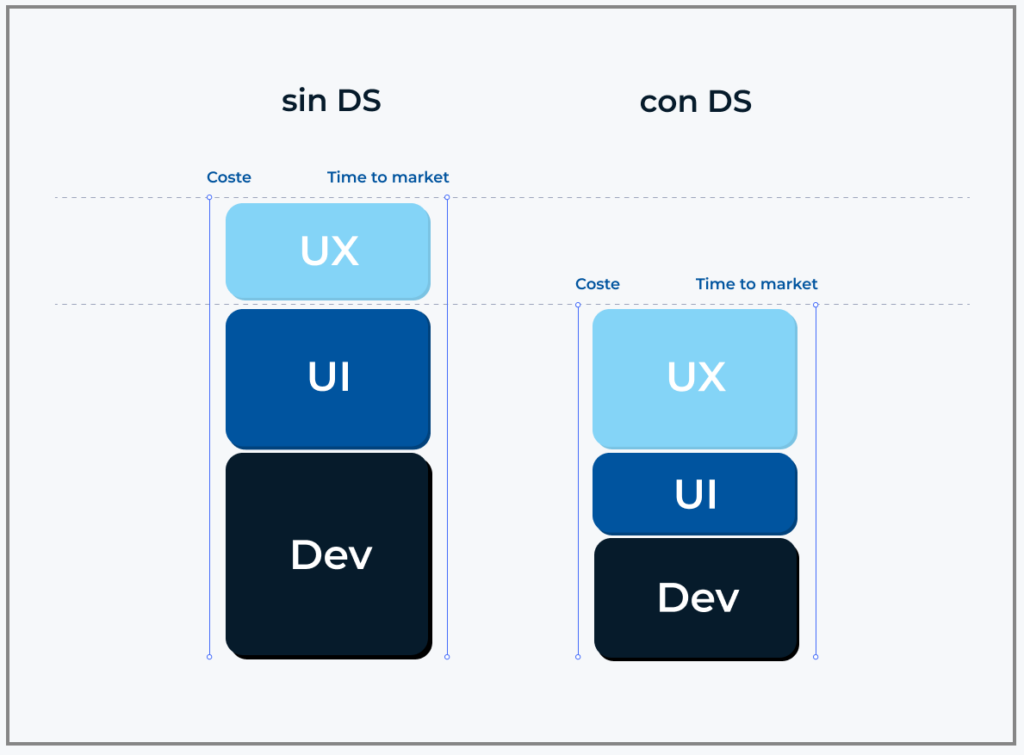
Creating a Design System for a global financial institution
June 19, 2023
This case is by far one of the most interesting that Sngular Design has worked on in recent years. It involved teaming up with a large global financial organization and with tens of millions of clients. It is a state-of-the-art process, deeply intertwined with the organization, since it shifts and responds to the way the organization works and its internal organization.
The enormous size of the organization is one of the main reasons for undertaking this project. It has a huge number of design teams with hundreds of designers, who all have to work with the same brand, under the same framework and rules across a dozen of countries, each of them with their specifics. It is clear that any help to facilitate organization in such a large environment will have a great impact in reducing costs and time. In fact, the objective is that: to help put order and achieve a shorter and cheaper time to market.
And how does a Design System help to achieve this goal? Well, by its very conception, a design system is nothing more than the way of trying to crystallize the requirements of a brand in a set of design principles and a series of UI components that are flexible enough to be practically universal in the context of the organization.
The Challenge
In this case, the challenge was presented to us by the client, because he knew our capabilities. Faced with a problem involving design systems, they decided to come talk to us. Those conversations materialized in a collaboration, which has consisted in the development of a design ecosystem, with multiple local design subsystems, adapted to each of the client's areas and geographies, but maintaining a common experience with multiple variations and adopting the use of Design Tokens for further integration of design and development.
When approaching the project, the client was clear that they wanted not only to standardize, but also to create a community. One of the problems that organizations face when thinking about implementing their own design systems is that it is a very recent field, in which there is not a large amount of literature . In this sense, Sngular has been, in a way, the project's R&D department, accompanying the client, proposing improvements, technologies, tools and processes, in an iterative process that increased refinement, converging on the final result.
 *Plural DS es un framework desarrollado por Sngular Design
*Plural DS es un framework desarrollado por Sngular Design
The Solution
The process has been complex not only because of the youth of the technologies and methodologies involved, but also because of the complexity of the organization in which the design system had to be implemented, with all that this entails of listening to multiple areas and managing to align multiple stakeholders with sometimes divergent or even conflicting interests. In the end, a design system is a very political piece of the organization, being, in short, a compendium of the rules, often unwritten, of the organization. In the end, what works best is to keep in mind that the best design is the one that is used, so it is about working with the art of the possible.
Thus, one of the main premises was that the final result had to be something usable, something that would be adopted; not a dogmatic solution but something that responded to the reality of what the teams demanded, that was useful to them and that they wanted to use. To this end, a maximum flexibility approach was adopted within the strategic objectives.
Project Deployment
The form of relationship with so many teams has been, of course, another complication. We have used Agile methodologies with the aim of achieving an MVP in contact with multiple internal clients within the organization: areas, geographies, etc., each of them with their own communication tools.
Furthermore, thanks to the use of Design Tokens, the integration between design and development teams is greatly improved, and this is one of the conflict fields of any organization of a certain size that deals with software. In fact, the average time savings in mobile and desktop development projects is close to 35% thanks to the implemented design system.
The final result can only be described as a success, since the Design System ended up being published and used throughout the organization. Beyond the design components, the animated elements created, the fonts, icons, grids and templates, the color palettes, the accessibility guides, the illustration generator... The main objective of a job of this magnitude is to align the hundreds of people involved in the design area of an organization distributed throughout the world.
Well thought-out design systems take the culture of organizations and the agreements of teams and organize them into rules. They are a set of signals that are not invented, but rather summarize the rules with which the organization operates. For this reason, its adoption is unavoidable by large organizations that want to be competitive in the digital world, which means that at Sngular we feel very proud of the results achieved by helping our client.
Our latest news
Interested in learning more about how we are constantly adapting to the new digital frontier?

Tech Insight
March 19, 2025
Visualizing Software Quality with JIRA, Google Sheets, and Looker

Tech Insight
December 19, 2024
Contract Testing with Pact - The final cheetsheet

Insight
December 10, 2024
Groundbreaking technologies today that will reshape the innovation landscape in 2025

Insight
December 3, 2024
Sustainable Development: Minimizing Digital Footprint and Optimizing Consumption